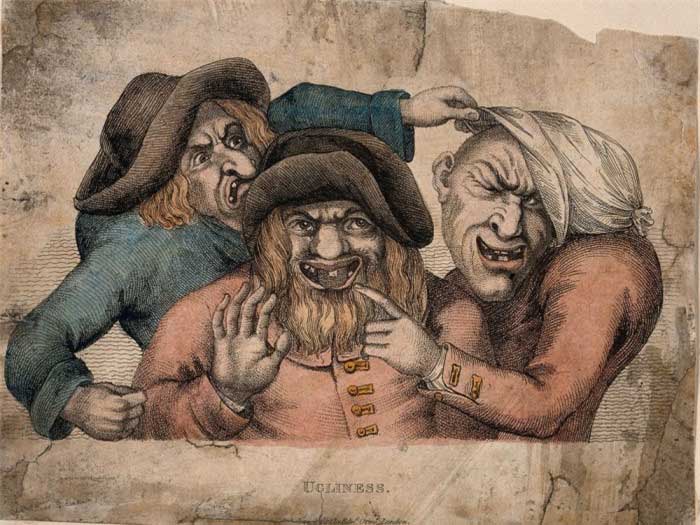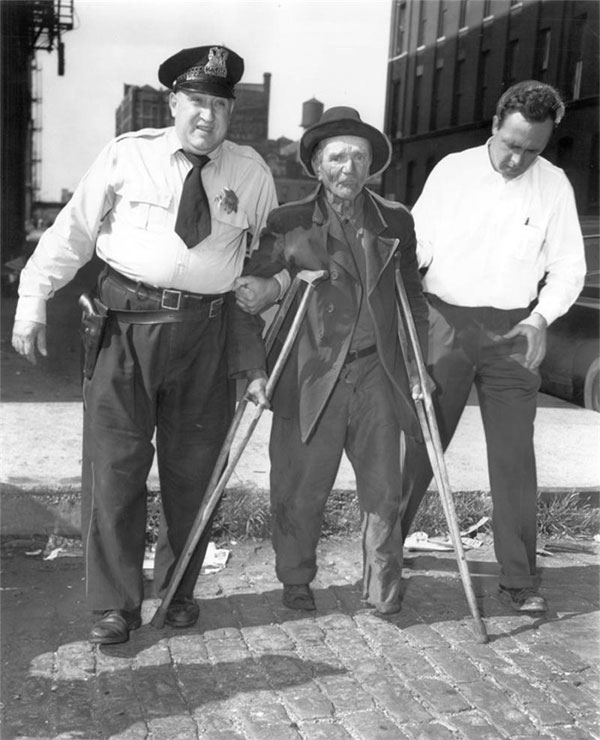Laws against ugly people used to exist in the US
Over the course of several decades in the late 19th and early 20th centuries, many American cities and states enacted laws that forbade people with physical disabilities from appearing in public.
In July 1867, Martin Oates, a veteran of the American Civil War (1861 - 1865), when he appeared on the streets of San Francisco, California in the form of "poverty, disease and derangement" was warned. custody to wait to be sent to the hospice. It's based on an executive order passed by the San Francisco government that forbids people like Oates - 'sick, crippled, disabled, or whose bodies are so deformed that they're terrifying' - from appearing present in a public place; Violators were fined up to $25 (about $400 today), jailed for 25 days, or sent to a workhouse.

Three men of peculiar appearance.
According to Professor Susan Schweik from the University of Berkeley, San Francisco was the first city in the US to pass Ugly Laws (ugly law), followed by Chicago, Illinois (1881); Denver, Colorado and Lincoln, Nebraska (1889); Columbus, Ohio State (1894); Portland, Oregon (1881); New Orleans, Louisiana (1883),. In particular, Pennsylvania applied it statewide in 1891, to subjects who were not only visually impaired but also cognitively impaired. While two cities New York and Los Angeles also tried to apply similar regulations but failed.

Chicago police escort a crippled man to the station in 1954.
Initially, these normative documents were often known as a tool to help the government deal with beggar inflation and preserve urban beauty. Only later, the name Ugly Laws was born, but not to judge people's appearance but in essence a form of legal discrimination. Legislators expect that with the new regulations, the poor, disabled and disabled (often easy to practice beggars) will be 'evicted' from the public eye, thereby contributing to maintaining peace and order. , ensuring aesthetics and minimizing tension between classes in society.
There are many factors that led to the emergence of these regulations. The first is due to the huge wave of immigrants (mostly poor) to the big cities, causing a scene of chaos in public places. Second, after the Civil War, many wounded and sick soldiers who lost their ability to work had to choose to beg in big cities, many fake people also took advantage of that opportunity to infiltrate, making the situation even more difficult to control. In addition, the moral concept is based on religion (Protestantism) - promoting individualism, emphasizing that people must take care of themselves, along with the lack of the health care system. Equal health and well-being are also important factors.

A blind beggar in a wheelchair in Lawton, Oklahoma, 1917.
Although the enactment and application of such laws dwindled during World War I (1914-1918), legal documents persisted for decades afterward. The last time Ugly Laws were used by authorities to arrest violators was in 1974 in Omaha, Nebraska. According to the Cleveland archives of this incident, an Omaha officer wanted to arrest a beggar but had no good reason; After 'digging up' a lot of legal documents, he discovered that the Ugly Laws were still in effect and detained the beggar because he had 'scars and marks' on his body. Disagreeing with such behavior, the prosecutor stated in court that although the law was still in effect, the prosecution was groundless because there was not enough evidence to prove the 'ugliness' of the accused. can;
Although outdated, many Ugly Laws remained in effect until the late 1970s. In 1974, Chicago was the last city in the United States to repeal the ordinance after it had existed for 93 years. In 1990, the federal government enacted The Americans with Disabilities Act after many efforts of individuals and social activist organizations. The Act was created to protect the rights of people with disabilities, so that they are no longer discriminated against because of physical or psychological defects, have equal rights to employment opportunities, access to services, etc. public services and public spaces.
Fortunately, this anti-human act did not spread from the US and spread to other countries. But in 1902, the city of Manila (Philippines), then under American rule, issued a decree banning beggars from working, causing public disrepute and completely written in English.
- The 10 most crazy laws of America still exist today
- The famous and ugly duchess of the world is known and mysterious for hundreds of years
- Ugly people are always looked down on
- 37oC - Why?
- The most bizarre laws on the planet
- 6 'ugly' prehistoric animals still exist today
- Discovering extremely ugly 'ugly' cholesterol
- 7 laws to protect the dog
- Blobfish: The most 'ugly' animal on Earth
- Scientific research causes headaches: Life can exist in a two-dimensional universe
- 10 exotic and interesting laws of India
- Admire the 'monstrous' turtle of Vietnam
 Biography of hero Vu A Dinh
Biography of hero Vu A Dinh History of hematology
History of hematology Who is Mr. Tam Da 'Phuc-Loc-Tho' and what does it mean?
Who is Mr. Tam Da 'Phuc-Loc-Tho' and what does it mean? Unbelievable facts about the history of the oil and gas industry: Gasoline used to be cheaper than water, so abundant that it had to be dumped into the river...
Unbelievable facts about the history of the oil and gas industry: Gasoline used to be cheaper than water, so abundant that it had to be dumped into the river...